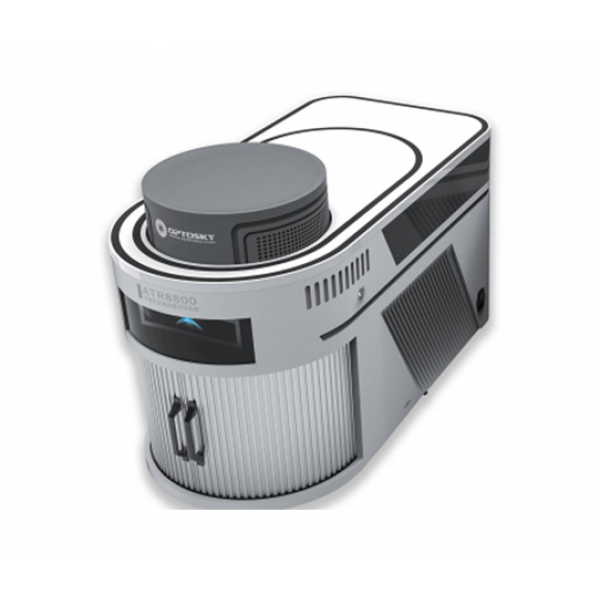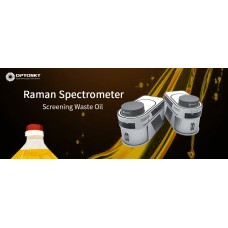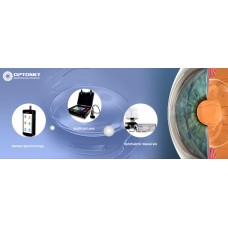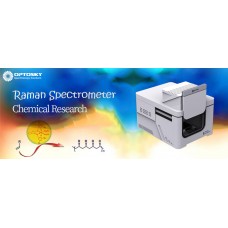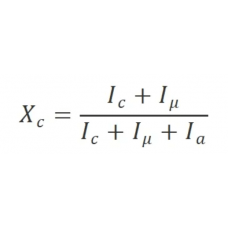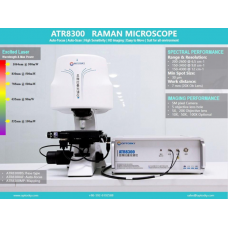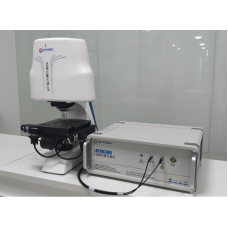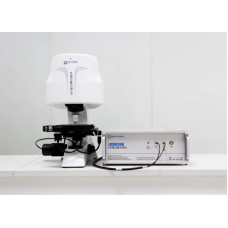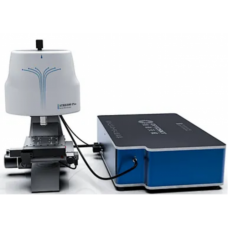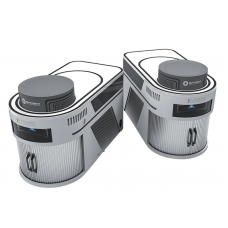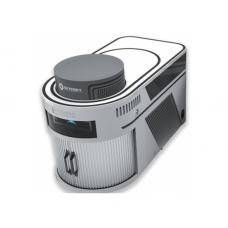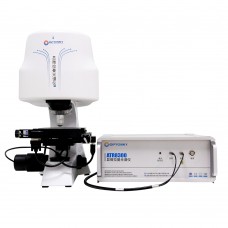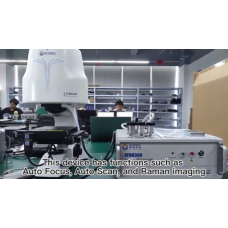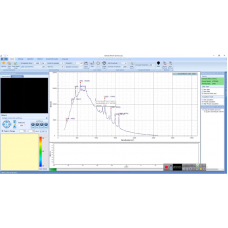- ATR8800 C series micro-Raman spectrometer integrates up to 4 lasers and combines the advantages of both microscopes and Raman spectrometers. The micro-Raman detection platform makes it possible to "what you see is what you measure", and the visualization is accurate. The positioning Raman detection platform allows observers to detect Raman signals of different surface states on the sample, and can simultaneously display the micro-area morphology at the detected location on the computer, which greatly facilitates Raman micro-area detection.
- The entire ATR8800 series can perform fully automatic focusing, fully automatic scanning, and one-click operation. It can perform batch experiments, uniformity scanning, etc. without waiting, and can obtain highly reliable scanning imaging Raman data;
- ATR8800 is equipped with spectrometers with different focal lengths to meet different resolution requirements. ATR8800 is also equipped with an objective lens specially designed for the Raman system, which makes the laser spot close to the diffraction limit. The focus information is accurately and intuitively displayed on the computer through a 5 million camera. on. It overcomes the problem in ordinary Raman systems that the focal plane for collecting Raman signals is slightly higher or slightly lower than the actual optimal focal plane, thereby improving the quality of the Raman spectrum.
- ATR8800 perfectly solves the loss of optical path during camera imaging and realizes the separation of camera imaging and Raman signal collection, thereby obtaining the best signal strength. At the same time, ATR8800 uses high-performance Raman specially optimized for micro-Raman systems. It is industry-leading in terms of sensitivity, signal-to-noise ratio, stability, etc., providing a strong guarantee for Raman research.
| Confocal Raman Microscope | |
| Excitation Wavelength | 266、325、532、638、785、 1064nm Optional, integrate up to 4 excitation wavelengths simultaneously |
| Detector | 1) Deep cooling area array CCD: 2000X256 pixels 2) Deep cooling high sensitivity EMCCD: 1600X200 pixels 3) Deep cooling area array InGaAs CCD: 512X1 pixels Up to 2 detectors can be integrated, choose one from detector 1# or detector 2#; |
| Spot Diameter | >1μm |
| Working Humidity | constant humidity (50±10%) |
| Working Temperature | Constant temperature (25±2℃) |
| Interface | USB3.0 |
| Microscopic Illumination | High brightness and long life white LED |
| Microscope Camera | 5 million pixel industrial camera |
| Focus Method | conjugate focus |
| Laser Stability | σ/μ <±0.2% |
| Laser Power | 266nm:30 mW 325nm:30mW 532nm: 100mW 633nm:80mW 638nm:80mW 785nm:350mW 1064nm:500mW |
| Voltage | 100 ~240 VAC |
| Peak Power | < 200 W |
| Dimensions | ATR8800-FL350:905(L)×58.3(W)×643(H) ATR8800-FL510: 1009(L)×58.3(W)×643(H) ATR8800-FL810: 1520(L)×68.3(W)×643(H) |
| Weights | ATR8800-FL350:59 Kg ATR8800-FL510:63 Kg ATR8800-FL810:78 Kg |
- Fully automatic Raman imaging experiment,automatic focusing and automatic scanning.
- Confocal optical path design (confocal optional).
- Supports up to 4 excitation wavelengths for Raman.
- Ultra-long focal length and high-resolution design.
- Rotating grating design, integrating large range and high resolution.
- Sealed hatch design, the experiment is not affected by ambient light.
- Ultra-high sensitivity, signal-to-noise ratio >6000:1
- Ultra-large range imaging (100X100mm), automatic image stitching.
- Unique software controls switching light path.
- Quick positioning, quickly find the focus position.
- USB3.0 interface directly connected to computer.
- Nanoparticles and new materials
- Research institute research
- Biology
- Forensic Medicine Identification
- Material science
- Medical Immunoassay
- Agriculture and food identification
- Gem and inorganic mineral identification
- Environment
ATR8800 Model No. Rules:
ATR8800AF-LT-FL350-532+633:
AF: Auto Focus
LT: long integration time
FL: Focal length: 350mm
Dual-band: 532nm & 633nm
ATR8800MP-SCM-FL760-532+633+1064:
Scanning Imaging: SCMOS Detector
Focal Length:760mm
Triple-Band: 532nm, 633nm and 1064nm
Model | Focus length | Excitation wavelength /nm | Laser power /mW | Maximum wave number range | Miniature resolution/cm-1 |
ATR8800-FL350 | 350mm | 532 | 100 | 200 ~ 3700 | 1.4 |
633/638 | 80 | 200 ~ 3500 | 1.4 | ||
785 | 350 | 200 ~ 3500 | 2.1 | ||
1064 | 500 | 200 ~ 2500 | 5.2 | ||
ATR8800-FL510 | 510mm | 532 | 100 | 200 ~ 3700 | 0.9 |
633/638 | 80 | 200 ~ 3500 | 0.9 | ||
785 | 350 | 200 ~ 3500 | 1.4 | ||
1064 | 500 | 200 ~ 2500 | 3.6 | ||
ATR8800-FL760 | 760mm | 532 | 100 | 200 ~ 3700 | 0.5 |
633/638 | 80 | 200 ~ 3500 | 0.5 | ||
785 | 350 | 200 ~ 3500 | 1.0 | ||
1064 | 500 | 200 ~ 2500 | 2.7 | ||
ATR8800LT:3rd stage cooling to -30℃, long integration time (up to 1.3h) ATR8800SCM:Te-Cooled SCMOS detector ATR8800BS:Basic series ATR8800AF:Auto-focus ATR8800MP:Scan imaging-Mapping, Auto-focus | |||||
- Optosky has been developing Raman spectrometer for 20-year.
- Optosky is China National Standards drafter of Raman spectrometer
- Top 1 in China brand and Top 3 brand in the world.
In 2016 launch the first generation handheld Raman spectrometer, - In 2017 launch the dual-band Raman spectrometer
- In 2020, launch the triple-band Raman microscope
- In 2021, launch the quadriband scientific-grade Raman microscope
- Optosky represents the highest performance cost less Chinese high-tech manufacturers with industry-leading warranty guarantee and technical support.
- Optosky's Raman spectroscopy technology originate from Shanghai Institute of Technical Physics Chinese Academic of Science University and Xiamen University Zhong Qun Tian who discovers SHINERS makes SERS can be preserved longer than 2 years.
- Quality control system follows Agilent Technologies
- 60% R&D engineers provide Industrial-leading warranty guarantee and technical support services
- The most experienced engineers and 3 Drs team in Raman spectroscopy
- Complete certification of ISO, CE, FDA Approval, Police Approval, API Approval
Q: Why the 1064nm Raman can resist high fluorescence materials?
A: 1064nm belong to NIR photon has a low frequency, low energy is seldom absorbed by the sample molecule, and it's difficult to excite ground state electron as well as fluorescence, so that it prevent fluorescence from generation.
Q: Why Raman signals are easily annihilated by fluorescence?
A: Fluorescence intensity is about 10^6 times stronger than that of Raman signal. traditional Raman signals are easily annihilated by fluorescence.
Q: Which materials have high fluorescence recommended to use 1064nm Raman?
A: Such as Heroin, Fentanyl, Colour samples, Biological samples, Textiles, Bacteria, Drugs, Fuel, Petroleum samples, Vegetable oils, Explosives, Plastic.
How many methods can remove fluorescence interference?
1st, Baseline correction uses an algorithm to remove fluorescence interference.
2nd, Difference Raman uses two wavelengths of lasers (eg: 784.5nm+785.5nm) to excite samples can obtain two sets of Raman signal and calculate the difference to obtian the spectrum without fluorescence.
3rd, Time gate control method
4th Fluorescence photobleaching method
5th, 1064nm Raman spectrometer is highly recommended

